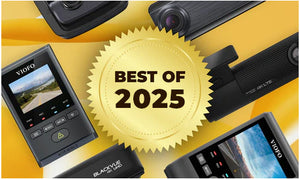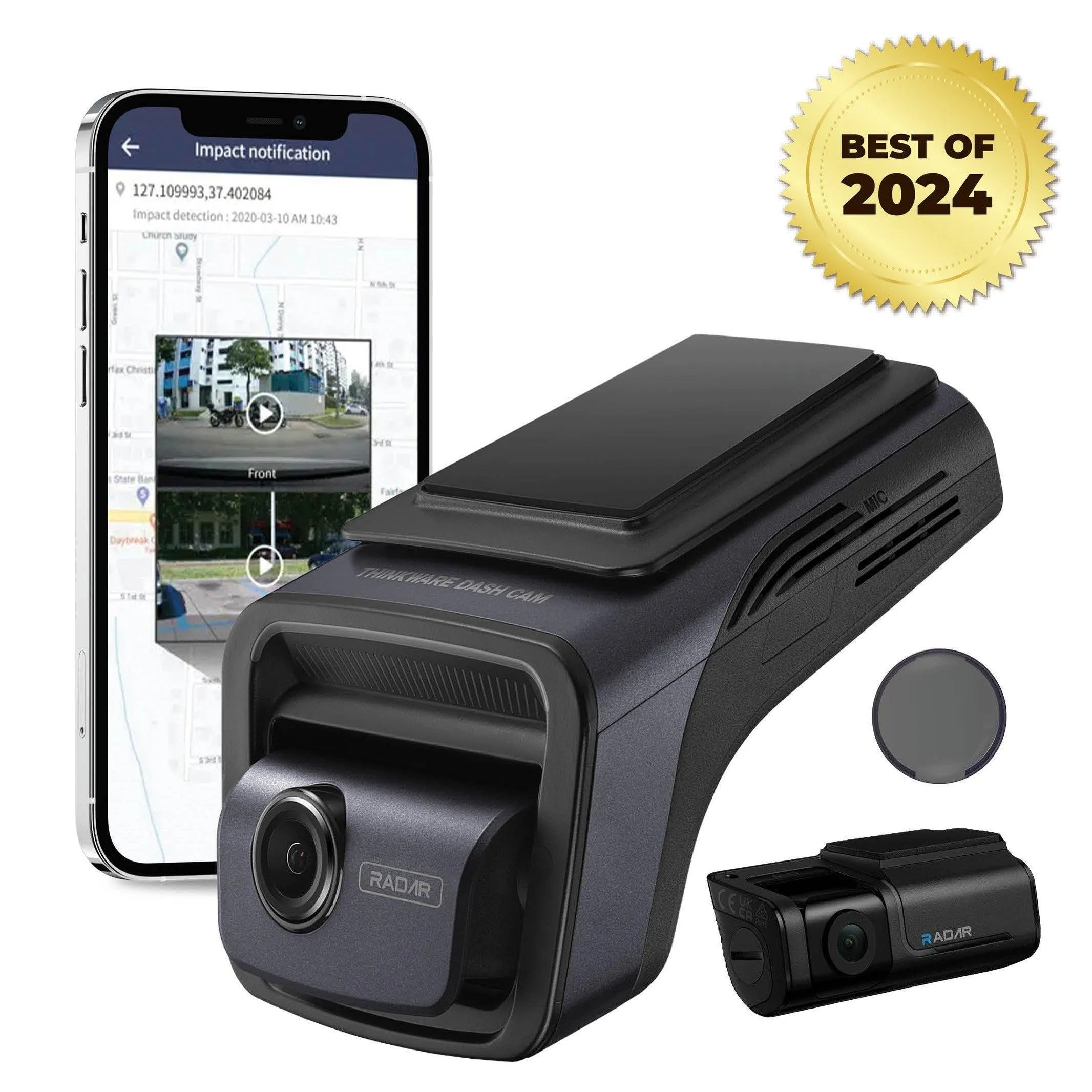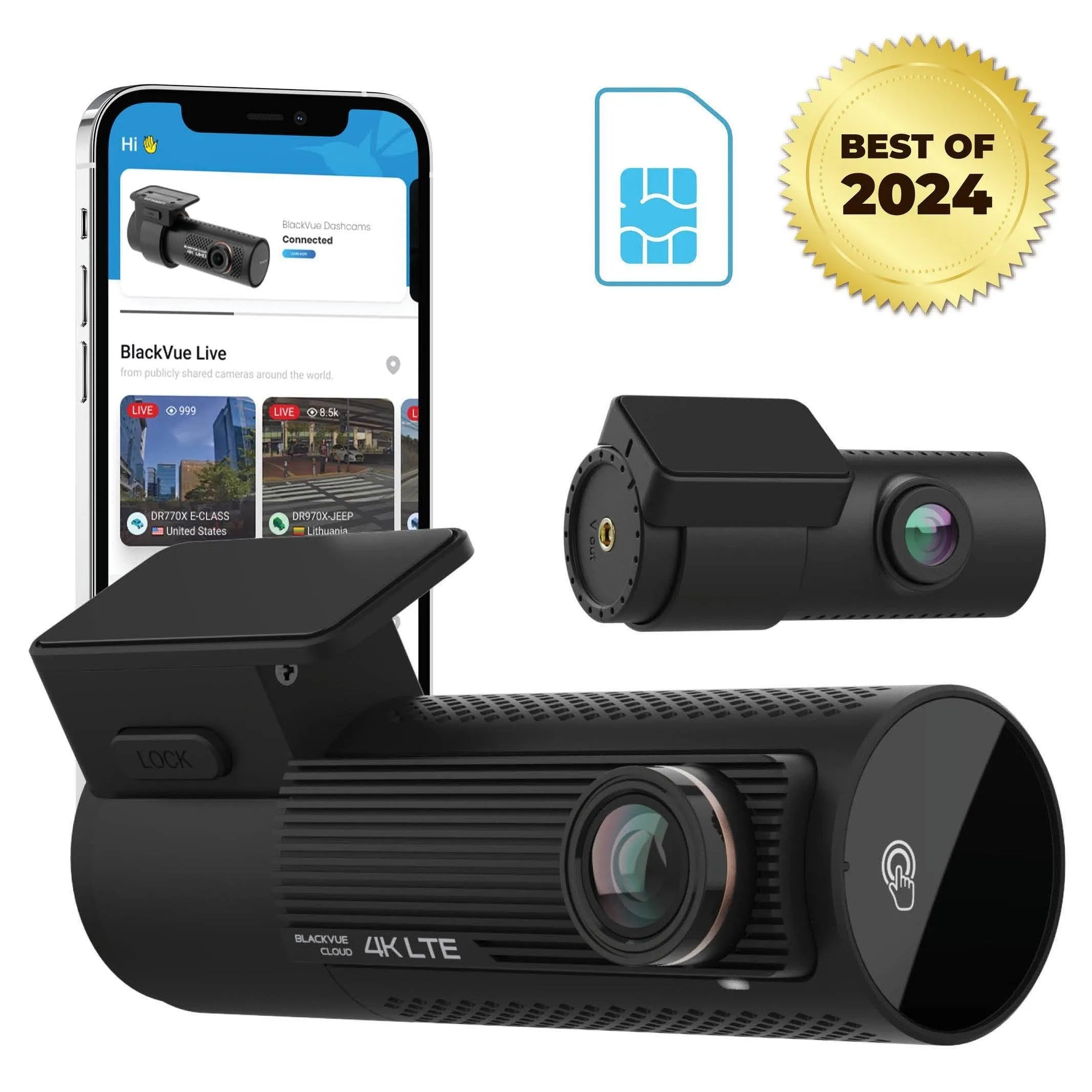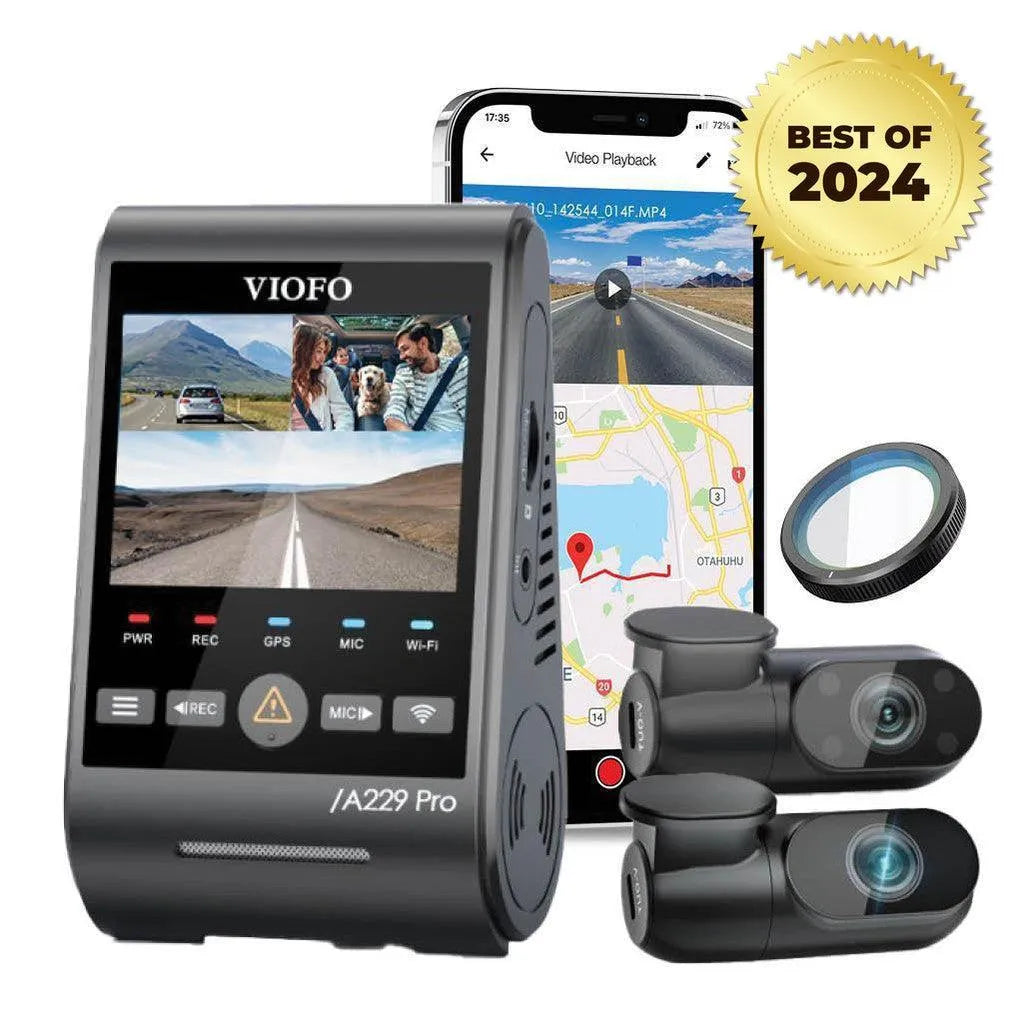Is Your Dash Cam Lying to You?
Real 4K vs. Fake 4K Dash Cams
Over the past decade, dash cams have become essential for drivers, providing security and peace of mind. As technology has advanced, dash cams have evolved from grainy 720p footage to stunning 4K resolution, capturing crucial details like license plates even during night drives. Investing in a genuine 4K dash cam is crucial for obtaining high-quality, irrefutable evidence.
As you may have already guessed, 4K dash cams are expensive. A basic, affordable single-channel 4K unit, like the VIOFO A229 Pro 1-CH, costs around $250 USD. However, if you look elsewhere, you may see some cheaper options that advertise 4K recording. Are these too good to be true?
In this article, we will share everything you need to consider when getting a 4K dash cam and how to avoid getting burned by a fake one.
The Rise of Fake 4K Dash Cams
As technology is being advanced further and further, demand for better and better image quality has increased. It used to be that 4k was only available from major players like BlackVue, Thinkware, and VIOFO, and they often cost a pretty penny. Unfortunately, as 4K dash cams became more prevalent and affordable, many fake 4K dash cams have appeared for sale on online marketplaces like Amazon. These systems often carry attractively low price tags that make them seem like absolute steals, and while they do create video files in the appropriate resolution, there’s always a catch.
The Rise of Fake 4K Dash Cams
Image Sensor
A true 4K camera captures at a resolution of 3840x2160 pixels (W x H), which roughly translates into 8 megapixels (MP), so it must have at least an 8 MP sensor to do so. Any image sensors smaller than 8 MP are physically incapable of capturing 4K video, yet that’s what many so-called 4K cameras claim, through upscaling.
While all true 4K dash cams are equipped with 8 MP sensors, not all of them are created equally. The Sony STARVIS 2, found in models like the BlackVue DR970X Plus, Thinkware U3000, and VIOFO A229 Pro, offers superior low-light performance, colour and contrast, clarity, noise reduction, and lower power consumption. Advanced technologies such as high-bitrate recording, faster shutter speeds, Super Night Vision, and HDR further improve video quality, making these newer models the best choice for capturing high-quality footage. Sony STARVIS 2 image sensors are currently the pinnacle of dash cam quality, and are a key factor to look for when searching for a high-recording-quality model.
Many cheaper 4K dash cams on the market use older image sensors like the OmniVision OS08A10 (launched circa 2020) and the Sony STARVIS IMX334 (launched circa 2018).
Video Resolution
True 4K resolution is 3840x2160 pixels, providing exceptionally clear and detailed footage. However, many fake 4K dash cams, such as the Rove R2-4K and Rexing V1, use upscaling to artificially enhance lower-resolution footage. Upscaling is a process where the dash cam stretches or enlarges the video to meet the 4K pixel count, often resulting in distorted or blurry images. Upscaling tries to intelligently guess what fills missing pixels, but simply can’t create details that were never captured in the lower resolution. Some fake 4K cams even record at non-standard resolutions like 2880x2160, which fail to deliver the true quality of authentic 4K, misleading consumers with inferior performance. While the vertical resolution (2160) matches true 4K, the horizontal resolution (2880) falls short. To achieve 3840 pixels horizontally, these cams stretch the video, distorting the image quality and misrepresenting true 4K performance.
Pricing
Lastly, as 4K cameras require high-resolution sensors which don’t come cheap, this is often reflected in the price of the final product. Our most affordable 4K dash cam, the VIOFO A229 Pro, starts at a somewhat steep price of $229.99 USD - and that’s just with a single camera, no SD card, and no hardwiring kit! As a result, if you come across a 4K dash cam for anything less than that, the chances of it being fake are higher, and you will most likely not get the results you were hoping for.
Other things to consider when getting a 4K dash cam
The image sensor, video resolution, and price are the most important things to look for when determining whether a dash cam can capture true 4K video. However, just because a dash cam captures 4K video doesn’t mean it’s good. If high-quality footage is what you’re after, here are a few other things you should consider when shopping for a 4K system:
Framerate
Even if you choose a dash cam that records true 4K video, what good is it if the footage comes out choppy and full of motion blur? That’s why it’s important to avoid 4K dash cams that capture at lower framerates, which we define as anything below 30 fps. All of the 4K dash cams we currently carry capture at 30 fps, but this isn’t always the case with cheaper or older systems.
Many 4K dash cams on the market run older or lower-end hardware, which leads to constraints in their ability to capture at an ideal framerate. These cheaper or older 4K dash cams will account for those constraints by dropping their framerates to prioritize the desired resolution. While lower framerate footage may be perfectly usable when everything’s at a crawl or a standstill, important details like license plates and road signs become increasingly more difficult to make out as speed increases.
Even older 4K systems from name brands like the VIOFO A139 Pro did exactly this: it captured 4K video at 30 fps in its 1- and 2-channel configurations, but adding the third interior camera limited the framerate to 24 fps. Fortunately, this is no longer an issue with its successor, the A229 Pro, which sustains the full 30 fps even with the third camera in action.
Rear and interior camera quality
If you plan on purchasing a multi-channel dash cam, make sure to check the video quality of any additional cameras as well. You may not want a system that sacrifices rear and interior video quality for high-quality front footage.
The BlackVue DR970X Plus series’ rear and interior cameras only capture at 1080p, but we’ll cut them some slack since their powerful cloud features need that extra processing power. However, many other 4K dash cams without cloud features only capture at 1080p or lower resolutions at the rear.
While we have yet to see any dash cams that capture 4K video across all channels, systems like the VIOFO A229 Pro and Thinkware U3000 capture 2K video in the rear, ensuring that anything that happens behind your vehicle is captured with greater clarity and detail than 1080p footage. The A229 Pro specifically even uses Sony STARVIS 2 in it’s rear camera.
Storage capacity
Because 4K video files are significantly larger than 2K or 1080p files, they naturally take up more space on the dash cam’s SD card. Smaller SD cards, with a capacity of 64GB or less, can only store a few hours of 4K footage at a time, not accounting for any system files or footage from other channels in the system. This will either translate into a full SD card in no time or a smaller window to retrieve important footage before it’s deleted, depending on how the dash cam operates.
We recommend choosing 4K dash cams that support storage capacities of 128GB or greater. Both of Thinkware’s 4K systems, the U1000 and U3000, and the original BlackVue DR970X support SD cards as large as 256GB, while all of BlackVue’s and VIOFO’s current 4K systems support a maximum storage capacity of 512GB. Having more storage means a lower chance of your SD card filling up or important footage being lost as it’s overwritten.
What about 8K dash cams?
8K video cameras like the Insta360 Ace Pro are getting more widespread, so you may have seen some dash cams claiming to capture 8K video on sites like Amazon. However, as our friend Ariel from Vortex Radar has discovered, an 8k dash cam isn’t possible yet - especially if the price seems too good to be true There is currently no such thing as a true 8K dash cam as the technology isn’t there yet.
Of course, we’ll probably get there one day, so subscribe to our email newsletter for the latest scoop on dash cams!
Our top picks for True 4K UHD Dash Cams
The most premium and advanced Sony STARVIS 2 dash cam
Thinkware U3000 4K UHD 2-Channel
The undisputed champion of our Best 4K Dash Cams of the Year
With the highest resolution dual-channel system on the market, the Thinkware U3000 boasts 4K front and 2K rear camera, with it's front camera using top of the line tech with a Sony STARVIS 2 image sensor, and Super Night Vision 4.0. But it's not just the impressive specs that make the U3000 stand out.
What truly sets the U3000 apart is its unparalleled parking mode features. Including a plug-and-play OBD cable to easily use the U3000’s built-in Radar Sensors. These built-in radar sensors, exclusive to the U3000, extend parking mode well beyond the length of its competition, lasting 2-3 days of parking coverage.
The Thinkware U3000 is cloud-ready, allowing remote access to footage. In the case of a strong impact, a push notification can be sent to your smartphone, giving you the ability to check on the video clip or remote live view and see what's happening. The U3000 also features a Bluetooth connection to assist with its wifi, allowing for a seamless and intuitive connection to your phone.
It's our top pick because:
✅ 4K UHD Front + 2K QHD Rear
✅ Smart Parking Mode Options
✅ Bluetooth Connectivity
✅ Discreet Installation
✅ Included External GPS
- Video Quality: 4K UHD Front + 2K QHD Rear
- Field of View: 158° Front + 128° Rear
- WiFi: Yes
- Cloud-Ready: Yes
- Bluetooth: Yes
- ADAS: Yes
- Built-in Radar: Yes
- Parking Mode: Yes
- Memory Card: Up to 256GB
Most Advanced 4K Cloud Dash Cam, now with Sony STARVIS 2
BlackVue DR970X Plus 2-CH 4K UHD
Sony STARVIS 2 power with instant mobile hotspot connectivity
This two-channel dash cam offers all the best parts of BlackVue. Aside from the 4K UHD resolution through an 8MP Sony STARVIS 2 IMX678 sensor for its front camera and a 2MP Sony STARVIS sensor for its rear camera, the DR970X-2CH LTE is the only BlackVue dash cam with a built-in LTE.
The DR970X-2CH LTE can easily connect to the BlackVue Cloud and even transform your dash cam into a Wi-Fi Hotspot device – all you need is a SIM card with an active data plan to insert into the camera’s built-in SIM slot. This can provide internet and you can have the best Cloud features on your phone! It has also upgraded its storage capacity to 512 GB, and comes with a 2-year manufacturer warranty.
It's our top pick because:
✅ 4K UHD Front + Full HD Rear
✅ H.264 and H.265 options
✅ Customizable Intelligent Parking Modes
✅ Cloud Capabilities
✅ Built-in 4G LTE Connectivity
✅ Up to 512 GB Micro SD capacity
✅ 2-Year Manufacturer Warranty
- Video Quality: 4K UHD Front + Full HD Rear
- Field of View: 146° + 131°
- WiFi: Yes
- Built-in 4G LTE: Yes
- Cloud-Ready: Yes
- Parking Mode: Yes
- Memory Card: Up to 512GB
The First Dual 4K + 2K Sony STARVIS 2.0 Dash Cam
VIOFO A229 Pro 4K UHD Dash Cam
The best dash cam to use for full coverage when ridesharing
The brand's flagship model is the VIOFO A229 Pro triple-channel dash cam. Now available in up to 3-channel configurations for front, rear, and interior cabin coverage, the VIOFO A229 Pro features an 8MP Sony STARVIS 2 IMX678 for its 4K UHD primary camera and a Sony STARVIS 2 IMX675 for its 2K QHD rear camera, all of which are equipped with HDR and Super Night Vision.
For Parking Mode, the VIOFO A229 Pro offers Auto-Event Detection with buffered recording, Time Lapse, and Low Bitrate Recording for optimal parking mode protection. Aside from that, this dash cam boasts built-in dual-band Wi-Fi, Ultra-Precise Quad-Mode GPS, Voice Notifications and Voice Controls, an SD card maximum capacity of 512 GB, and a free CPL filter to keep your footage clean and glare-free!
It's our top pick because:
✅ #1 Recommended on Reddit
✅ Sony STARVIS 2.0 for Front & Rear
✅ 4K UHD + 2K QHD + Full HD
✅ Premium Features
✅ Flexible 1, 2 and 3-Channel Configurations
- Video Quality: 4K UHD Front + 2K QHD Rear + Full HD Interior
- Field of View: 140° + 160° + 150°
- WiFi: Yes
- Cloud-Ready: No
- Parking Mode: Yes
- Memory Card: Up to 512GB
Choose Real 4K for Real Protection
A quick Google search will yield a plethora of 4K cameras for you to choose from, but not all of them are true to their name.
We hope that our guide and recommendations will narrow down your search and lead you to the genuine 4k dash cam that you need. Got more questions? Send us a message and our dash cam experts will be happy to help!




